
“The 3DEXPERIENCE is a business experience platform, providing software solutions for every organization in your company. Based on 3D design, analysis, simulation and intelligence software, it powers Industry Solution Experiences via a single, easy-to-use interface.”
This is an excerpt from our website, but what does it actually mean with regards to Finite Element Analysis (FEA) simulation – and how can you leverage the power and flexibility of SIMULIA within the 3DEXPERIENCE? If you’re coming from a background of SIMULIA’s standalone products, you’re also probably trying to decide if switching to the 3DEXPERIENCE is right for you.
Understanding ‘Roles’
Unlike traditional softwares, the 3DEXPERIENCE is a ‘role’ based platform, which means once you have a login, you can customize the level of capability that each user needs in an almost infinite number of ways. For example, if you have a team of 20, you might have a handful that are responsible for project management, 10 designers and 3 analysts. Historically, this would mean that you would need to own:
- 20 seats of PLM software
- Perhaps some specialist tools for the project management team
- 10 seats of design software, like CATIA or SOLIDWORKS and
- 3 seats of analysis software, such as ABAQUS
Not only is this difficult to manage from an IT perspective, it is also very expensive and transferring of data between platforms can be extremely cumbersome.
With the 3DEXPERIENCE Platform, we simply acquire 20 user logins and then begin customizing each user’s list of ‘roles’ so that they have exactly the tools they need to perform their required tasks with maximum efficiency. For most applications (think CAD, PLM, CAE), roles range from ‘entry-level’, where cost is lower and capabilities are fairly standard, to trail blazing technologies that set the standard in the industry.
Main 3DEXPERIENCE Roles for ABAQUS FEA Simulation
In this post, we’re focusing on the FEA simulation roles. Unlike standalone ABAQUS (and all other standalone FEA packages), where you essentially purchase ‘all-or-nothing’, with the 3DEXPERIENCE we can customize the level of capability that each user has access to. This means we can have designers carrying out simple sanity check type analyses to take the load off the overworked CAE department and our analysts can focus on what they do best – high-end, multiphysics analyses to solve complex problems. Not only that, all of the CAD and CAE efforts are implicitly tied together, so oftentimes geometry and mesh can be automatically updated based on design changes, which can significantly expedite product development workflows. The underpinning solvers are all carried over from SIMULIA’s standalone products, so if you’re familiar with ABAQUS and the rest of the portfolio, the learning curve is really limited to a new graphical user interface (GUI). It should be noted here that there are a number of more industry specific roles that do include some FEA capability, but right now we’re just going to focus on the ‘main’ FEA-centric roles.
The simulation roles within the 3DEXPERIENCE build upon one another as follows:
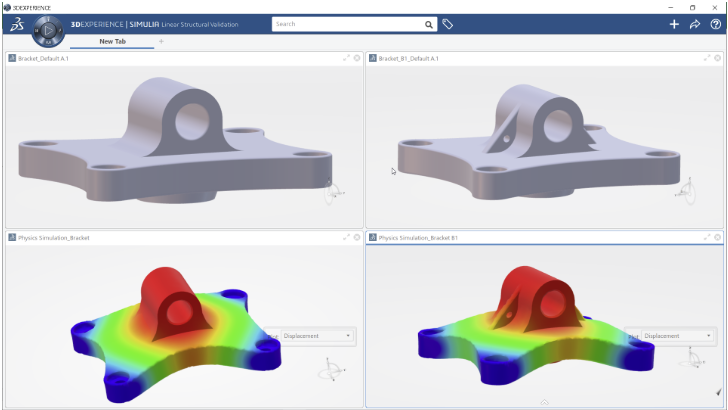
1) The Structural Designer (SRD) role is limited to linear ‘structural validation’. This means that a designer can quickly and easily mesh, constrain and load a 3D part that they are working on and run basic linear stress, thermal and frequency analyses in a guided environment to assess fitness for purpose. This role includes local 4-core compute capability, so there’s no need to purchase extra tokens to run your analyses – its click and go.
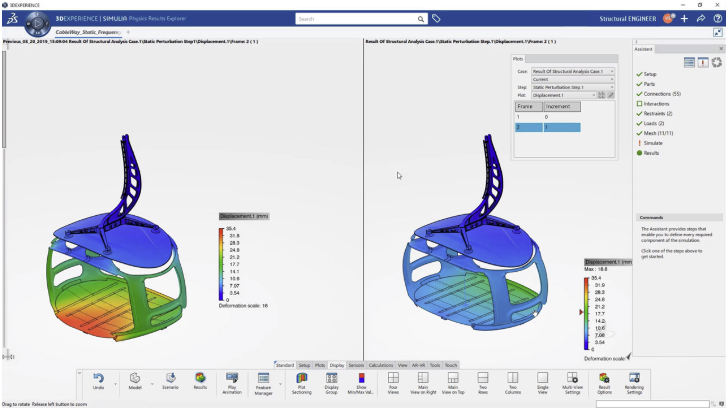
2) The Structural Engineer (SLL) role provides more thorough FEA capabilities, such as the ability to solve for buckling, harmonics and modal dynamics, as well as the added ability to manage large assemblies, utilize a larger array of element types such as beams and shells and interrogate the results more thoroughly with the Physics Results app. However, analyses are still limited to the linear regime. As with the Structural Designer role, embedded compute is available.
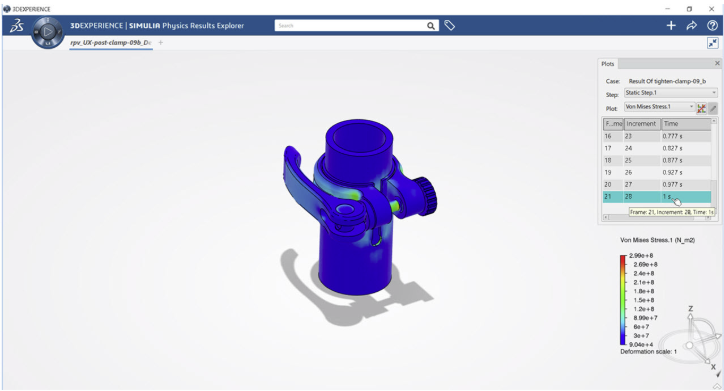
3) The Structural Performance Engineer (SFO) role builds on the capabilities of the previous roles by adding non-linearity and some dynamic capacity (implicit dynamic, transient thermal and visco/creep). With this role, we also unlock the potential to carry out multi-step analyses, which are often necessary to properly capture the various loading scenarios that a product will be subjected to. As with the above roles, embedded compute is available with the Structural Performance Engineer role.
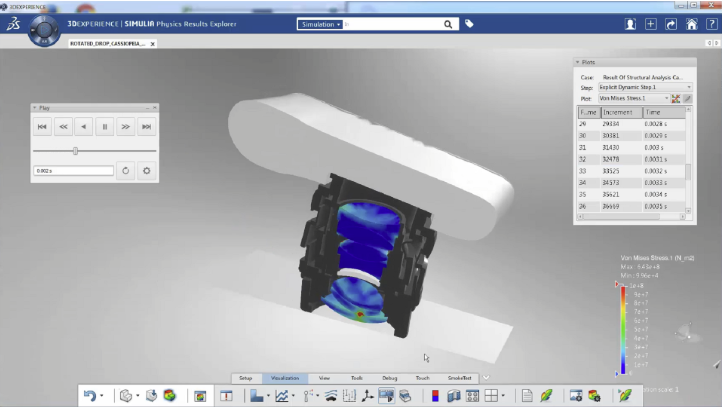
4) The Structural Mechanics Engineer (SSU) role is where we see the full FEA capability within the 3DEXPERIENCE. Important features for professional analysts such as full explicit-dynamic capabilities, random response and complex frequency analysis, sub-routine integration and more comprehensive modeling tools all become available. Embedded compute is available here too, but with the highly complex models that are typically being solved with the Structural Mechanics Engineer, it is recommended that tokens (SET) are also made available for jobs that require more than 4-cores to solve efficiently. We discuss SET tokens at more length in the Structural Analysis Engineer role below.
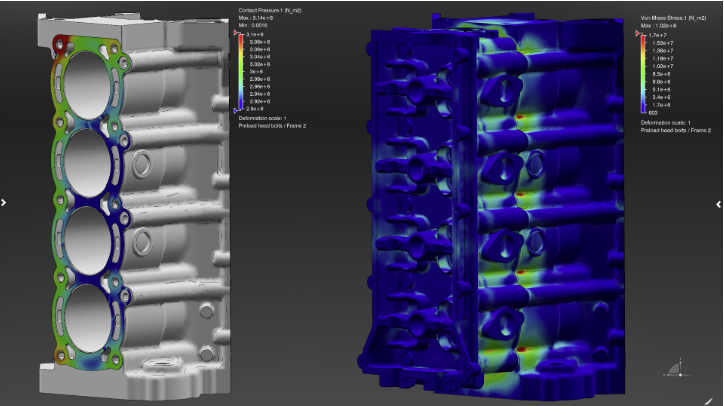
5) Finally, the Structural Analysis Engineer (SYE) role serves to act as more of a standalone FEA solution. The ability to generate CAD and manipulate geometry is enhanced and access to fe-safe, which is an industry-leading fatigue solver, is introduced. One other key difference between the Structural Mechanics Engineer and the Structural Analysis Engineer is that there is no embedded compute. This means that we are running jobs based on our token base, rather than using the 4-cores offered to us in the other roles. Essentially, the Structural Analysis Engineer role is an enhanced pre and post processing tool that allows us to work within the 3DEXPERIENCE platform/landscape. Dassault understands the costs associated with changing platforms and so the tokens required to run analyses on the 3DEXPERIENCE (SET) can be shared with standalone products (ABAQUS, fe-safe etc.) to allow a much smoother transition between workflows.
Key Benefits of ABAQUS within the 3DEXPERIENCE:
- Customize the level of capability based on analyst needs
- Designer-centric environment for democratization of simulation
- Embedded compute means no more token base is required
- Highly improved modeling and automation capabilities
- Mulitphysics at the forefront – carry out multiphysics simulations with the touch of a button; no back and forth between solutions
- PLM built in for better all-round communication within multi-functional teams
- Efficiency with your design team – design changes can even update models automatically and you can link to existing design workflows with ‘powered’by’
- No file transfers
- Ability to access ‘on-cloud’, meaning lower overall cost of entry
- Potential to run analyses using SaaS on the cloud
- And don’t worry, if you already have standalone install base, we can get you started with tokens that allow you to run both ABAQUS and SIMULIA in The 3DEXPERIENCE
Final thoughts
FEA simulation applications accelerate the process of evaluating and improving product performance, reliability and safety without the need to commit to costly and time-consuming physical prototypes. Dassault’s standalone ABAQUS software has long been regarded as the industry-leading FEA solver, and now you can pair it with the cross-functional power and efficiency of the 3DEXPERIENCE Platform.
Contact Fidelis today to learn more about how we help our customers meet their business goals with market-leading simulation applications.
